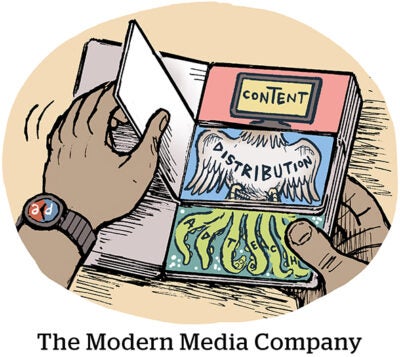Here’s today’s AdExchanger.com news round-up… Want it by email? Sign up here.
Gaming The System
Apple’s ATT has far-reaching ramifications not just for mobile game monetization but for how studios conceive and build games.
Google and Facebook were so adept at funneling players to game developers because they matched people precisely based on gaming history. These “curated, filtered cohorts,” as Eric Seufert describes them at Mobile Dev Memo, took into consideration what a game was about, whether someone would be into it and exactly how the game mechanics worked.
Post-ATT, developers must advertise more broadly (they can’t do much one-to-one targeting) and appeal to a wider audience. But that means building personalization and dynamic paths within a game, especially early on. (Unity’s all about that now.) Someone zipping through without a pause might see a different version of the game than someone who’s taking their time.
The result will be a content “fortressification” (it’s a real word, so don’t bother to look it up) of mobile gaming.
An indie App Store developer with a viral hit game was once commonplace but pretty much doesn’t happen anymore. And without ad revenue as a monetization pillar, developers must cross-promote users between different games or different kinds of apps entirely.
This is happening already – thus AppLovin’s interest in developing non-gaming apps, like those for meditation and wellness.
Agents Of Chaos
Media companies, retailers and advertisers are having a rough 2022. But ad agencies are skipping along relatively unscathed, The Wall Street Journal reports.
Huh? And how so?
Seemingly against all odds, all of the big agency holding companies raised their revenue forecasts throughout the year. But it was mostly thanks to business from marketers whose analytics and spend have been a mess since ATT and as a result of media fragmentation in general.
The complexity is real: There’s Apple’s data policies hammering Facebook and other platforms that rely on ad targeting, the rise of retail media and the upending of analytics.
Agency holdcos are adapting to meet these new challenges. IPG and Publicis made big bets with the acquisitions of Acxiom for $2.3 billion and Epsilon for $4.4 billion, respectively. Those seem to have paid off.
Most of the major agencies also have a lot of experience with important new channels like TikTok, Amazon and the spate of retail media platforms.
Even with a worsening economic outlook, the financial services company Macquarie projects only a 1% decline in organic revenue growth for agencies next year, compared to an upwards of 10% decline during previous recessions.
That Won’t Hold Up On Court
Milwaukee Bucks fans were clamoring on Twitter last week for their old cream-colored jerseys back. (Milwaukee is nicknamed Cream City, with jerseys to match.)
Paul Lukas, the founder of a website devoted to jerseys and sponsored gear, got to the bottom of it. Apparently, the NBA won’t allow cream-colored jerseys because they’re a similar color to the court, throwing off the dynamically inserted ads that render on the court on TV.
“It’s the latest depressing case of the advertising tail wagging the uni dog,” Lukas writes.
During the pandemic NBA bubble season, the cream jerseys made the players disappear on local broadcasts due to how the digital ads render (and try to erase anything wood-colored). Though ESPN-broadcast games include national advertisers, local broadcasts use digital tech to sub in local advertisers.
The NHL is grappling with the same issue, but even worse. It inserts ads on the boards around the hockey rink. But the boards are white, the inserted ads have a lot of white space to look natural, and jerseys are white. Since the ads are given preference to render properly, viewers see weird glitches where players disappear or are pixelated behind digital billboards – including right before or after critical goals, a big bummer for fans.
But Wait, There’s More!
We’ve come too far to ditch data-driven advertising. [The Drum]
DoubleVerify and LinkedIn announce partnership for contextual and brand suitability measurement. [release]
CVC, Group Black partner on bid for Vox Media. [Axios]
The Canadian media company Rogers Sports & Media launches a self-serve ad platform with DanAds. [release]
Try on your team’s World Cup jersey with Snap’s new AR filter. [FastCo]
You’re Hired!
The programmatic startup Blockboard hires James Shears as SVP and General Manager. [release]















